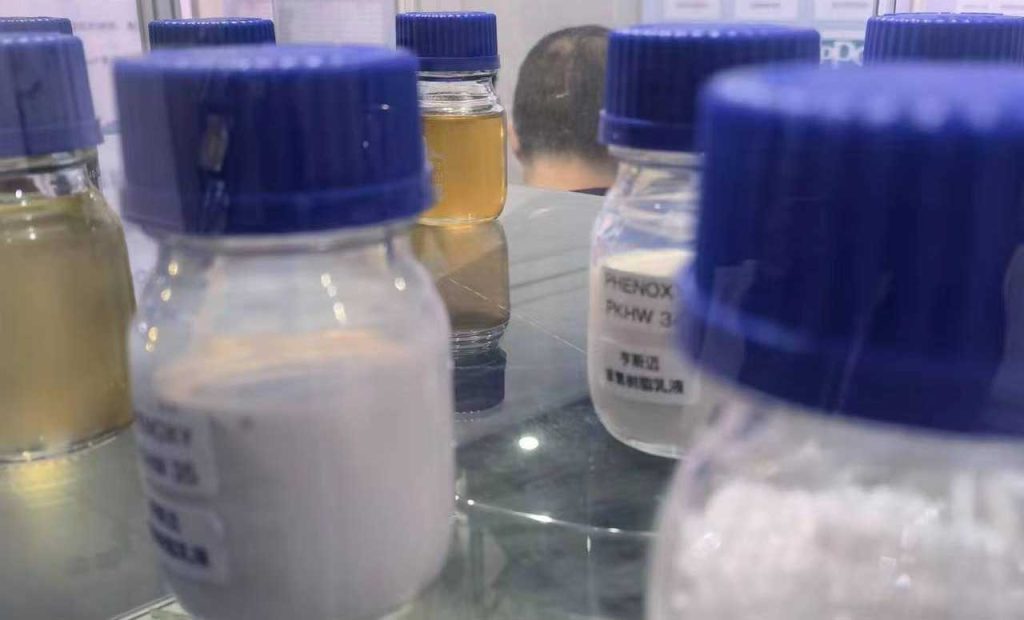Hidroxipropilmetilcelulosa
The Key Role of HPMC in Tile Adhesives |Hidroxipropilmetilcelulosa
HPMC (ko ar ingles), synthesized through a specialized etherification process involving highly pure cotton cellulose under alkaline conditions, assumes a pivotal role as an additive in boosting the viscosity of tile adhesive formulations. In general, the viscosity of the HPMC Hydroxymethyl Cellulose solution directly influences the viscosity of the resultant tile adhesive, thereby impacting the adhesive’s efficacy in bonding to the substrate. Notablemente, the augmentation of the adhesive’s viscosity and adhesion qualities corresponds to a proportionate increase in the viscosity of the HPMC Hydroxymethyl Cellulose solution.
Tile adhesives constitute a vital component for affixing tiles to surfaces such as concrete or block walls. Comprising elements such as cement, arena, limestone, HPMC Hydroxypropylmethylcellulose, and supplementary additives, tile adhesives are prepared for application following water incorporation. HPMC Hydroxymethyl Cellulose, distinguished as a superior cellulose ether, enjoys widespread adoption within the construction sector, particularly within the domain of tile adhesive applications. Functioning as a triple-action agent, HPMC Hydroxypropylmethylcellulose contributes as a potent thickener, an agent for retaining water, and a binder. These cumulative effects synergistically enhance the overall performance and maneuverability of tile adhesive products.
What Are Tile Adhesives? | Hidroximetilcelulosa
Tile adhesives serve as the adhesive agents responsible for securely affixing tiles onto diverse surfaces or substrates. The intricate interplay of these components demands an adhesive substance with tailored characteristics to ensure effective bonding.
HPMC’s distinctive properties become especially evident in its capacity to influence both the physical and chemical aspects of tile adhesives. Acting as a critical modifier, Hydroxypropyl Methyl Cellulose HPMC contributes significantly to the adhesive’s behavior and performance, ultimately determining the adhesive’s effectiveness in achieving lasting and reliable bonds.
Derived through a specialized etherification process involving highly pure cotton cellulose under alkaline conditions, HPMC Hydroxymethyl Cellulose exhibits tailored attributes that make it particularly suitable for the construction industry, especially in tile adhesive formulations. Its distinctive molecular structure enables it to interact harmoniously with other components of the adhesive mixture, facilitating the creation of a consistent and stable formulation.
HPMC Solutions for Different Application Scenarios of Tile Adhesive
Hydroxypropyl Methylcellulose HPMC emerges as a versatile additive in enhancing adhesive performance. HPMC is adept at accommodating the unique demands posed by diverse settings and these following conditions:
Indoor Tile Adhesive
In spaces like kitchens and bathrooms, present a dynamic environment where HPMC’s attributes prove invaluable. HPMC (ko ar ingles) Hidroxipropilmetilcelulosa, with its intrinsic water retention capabilities, ensures the optimal moisture content required during the adhesive’s curing process. This is particularly significant in indoor settings, where controlled curing becomes essential for fostering a durable and lasting bond. HPMC’s thickening properties bolster the adhesive’s consistency, granting it the requisite texture for seamless application. This is paramount in indoor scenarios where meticulous precision is imperative to achieve impeccable tile placements. The chemical compatibility of HPMC with other components further contributes to the adhesive’s stability and uniformity, rendering it well-suited for interior applications.
Hidroxipropilmetilcelulosa (HPMC (ko ar ingles)) finds paramount utility within tile adhesives due to its multifaceted properties. The primary purpose of integrating HPMC into tile adhesives revolves around its capacity for water retention and thickening. This inclusion serves the fundamental objectives of augmenting the ultimate solidification strength of the tile adhesive, prolonging the duration during which the adhesive remains viable (open time), and refining its overall workability.
Outdoor Tile Adhesive
The formidable challenges posed by external factors such as exposure to water, fluctuating temperatures, and the relentless forces of nature are aptly addressed by HPMC’s multifaceted attributes. In settings like swimming pools, where water resistance is of paramount importance, HPMC Hydroxypropyl Methylcullulose assumes the role of a reliable barrier agent. Its water retention capabilities continue to shine, ensuring optimal hydration during curing, even when confronted with the constant presence of water. HPMC’s compatibility with various additives empowers it to withstand the stresses imposed by harsh climatic conditions. Be it on exterior walls, outdoor balconies, or any outdoor surface, HPMC’s role as a stabilizing and enhancing agent within the adhesive formulation remains unwavering.
Hydroxypropyl Methyl Cellulose HPMC Grade
There are two main hydroxypropyl methyl cellulose grade available depending on treatment. Two distinct categories, non-surface treatment HPMC Hidroxipropilmetilcululosa and surface treatment HPMC that has different functionalities that HPMC Hydroxypropylmethylcellulose offers across diverse contexts.
Non-surface treatment HPMC
The thickening properties of non-surface treatment HPMC further contribute to the enhancements witnessed within dry mortars. By elevating the viscosity of the formulation, HPMC imparts a desirable consistency that aids in preventing sagging, slumping, or excessive flow during the application process. This attribute proves to be indispensable, especially in vertical applications where maintaining structural integrity and uniformity of the applied material is imperative. 'Nehe, the ability of HPMC to enhance the cohesion of the mixture adds to the overall strength and integrity of the cured mortar or putty.
Surface Treatment HPMC Hydroxypropyl Methyl Cellulose
Surface treatment hydroxypropyl methyl cellulose (HPMC (ko ar ingles)) encompasses a specialized variant known for its delayed solubility, a distinctive attribute that unlocks an expansive realm of applications. This particular form of HPMC Hydroxypropyl Methylcullulose introduces a unique dynamic to the landscape of construction materials, finding its niche in diverse formulations such as gray calcium-based putty and cement-based mortar.
One of the benefits of utilizing delayed solubility HPMC Hydroxypropylmethylcellulose within gray calcium-based putty and cement-based mortar formulations is its influence on workability and longevity. As this HPMC Hydroxypropyl Methyl Cellulose variant slowly dissolves, it disperses its properties uniformly throughout the mixture, contributing to a more consistent and controlled application. The gradual dissolution also aligns with the curing and hardening process of the materials, synergistically complementing the overall setting time and strength development.
Hydroxypropyl Methyl Cellulose for Tile Adhesive Advantages
The incorporation of hydroxypropyl methyl cellulose into tile adhesive formulations presents a host of distinctive advantages that resonate throughout the entire spectrum of adhesive application and performance. These are the following advantages hydroxypropyl methyl cellulose in tile adhesives:
Less Retardation of Cement Hydration | Hidroxipropilmetilcelulosa
Cement hydration, a chemical process central to the setting and hardening of the adhesive, can occasionally encounter challenges associated with undesired delays. HPMC’s introduction addresses this concern by exerting its influence on the cement hydration kinetics. By modulating the rate at which cement particles react and bond, HPMC Hydroxypropylmethylcellulose ensures that the adhesive attains the optimal balance between workability and timely setting.
This advantage is particularly pronounced in scenarios where precise timing is essential, such as time-sensitive projects or environments characterized by fluctuating temperatures. HPMC’s adeptness at minimizing the risk of excessive retardation preserves the adhesive’s ability to adhere within the desired timeframe. 'Nehe, the controlled hydration dynamics facilitated by HPMC Hydroxypropyl Methylcullulose contribute to the formation of a robust and resilient adhesive bond.
Excellent Sag Resistance
By leveraging its inherent thickening properties, HPMC bolsters the adhesive’s ability to maintain its structure and consistency when applied vertically. This feature ensures that the adhesive adheres reliably to walls and other upright substrates without undesirable slumping or deformation. Komongu ar nt'uni, craftsmen can work with heightened precision, achieving accurate tile placement and optimal alignment. Hydroxypropyl Methyl Cellulose HPMC’s contribution to sag resistance extends beyond the application phase, as it also influences the long-term durability and stability of the installed tiles.
Good Consistency
Hydroxypropyl Methyl Cellulose HPMC Hydroxypropylmethyl Cellulose distinctive molecular structure effectively increases the viscosity of the adhesive formulation, resulting in a more cohesive and manageable substance. This improved consistency ensures that the adhesive adheres uniformly to various surfaces, promoting optimal bonding and minimizing the risk of uneven application. HPMC’s contribution to achieving a desirable adhesive texture facilitates precise tile placement, allowing for meticulous alignment and seamless integration.
Good Workability: Easy Use
HPMC’s water retention and thickening capabilities contribute significantly to achieving a good workable consistency in the adhesive mixture. Hydroxypropyl Methyl Cellulose HPMC ensures that the adhesive maintains an optimal texture for effortless application. This improved workability simplifies the process of spreading and positioning the adhesive, enabling craftsmen to achieve accurate tile placements with minimal effort.
Very Good Open Time
HPMC also influences the adhesive’s open time, allowing for a more extended period in which the adhesive remains viable. This prolongs the window for precise adjustments, aligning well with intricate tiling tasks or larger projects where seamless coordination is paramount. Jar esencia, the inclusion of HPMC Hydroxypropylmethyl Cellulose within tile adhesive formulations enhances the adhesive’s overall maneuverability, optimizing usability and contributing to a streamlined and effective tiling process.
High Water Retention
HPMC’s intrinsic properties as a water-retaining agent play a pivotal role in maintaining optimal moisture levels within the adhesive mixture. By effectively retaining water during the application and curing processes, Hydroxypropyl Methyl Cellulose HPMC Hydroxypropylmethyl Cellulose ensures that the adhesive remains adequately hydrated, contributing to the adhesive’s proper setting and durable bond formation. This high-water retention characteristic is particularly crucial in scenarios where controlled hydration is essential, such as indoor applications or environments prone to rapid moisture evaporation.
Thermal Stability Improved
Hydroxypropyl Methyl Cellulose HPMC into tile adhesive formulation gains a heightened resistance to thermal stressors, which is particularly beneficial in environments where temperature variations are commonplace. Hydroxypropylmethyl Cellulose HPMC’s presence acts as a stabilizing agent, enabling the adhesive to maintain its performance characteristics even under challenging thermal conditions. This enhanced thermal stability ensures that the adhesive’s bonding properties remain reliable and enduring over time, reaffirming HPMC’s role as a crucial component in elevating the overall durability and resilience of tile adhesive applications in diverse settings.
Good Anti-Crack, Anti-Shrinkage
Hydroxypropyl Methyl Cellulose HPMC’s unique attributes play a pivotal role in mitigating the risk of cracks and shrinkage that can compromise the integrity of adhesive installations. By incorporating Hydroxypropyl Methyl Cellulose HPMC , the adhesive gains a valuable reinforcement against structural vulnerabilities that can arise due to factors such as drying, curing, and temperature fluctuations. HPMC’s presence contributes to the reduction of stress-related cracks and the minimization of undesirable shrinkage, ensuring that the adhesive maintains its cohesion and adherence to surfaces. This anti-crack and anti-shrinkage advantage is particularly relevant in scenarios where long-term durability and resilience are important to guarantee that the tile adhesive remains steadfast over time.


